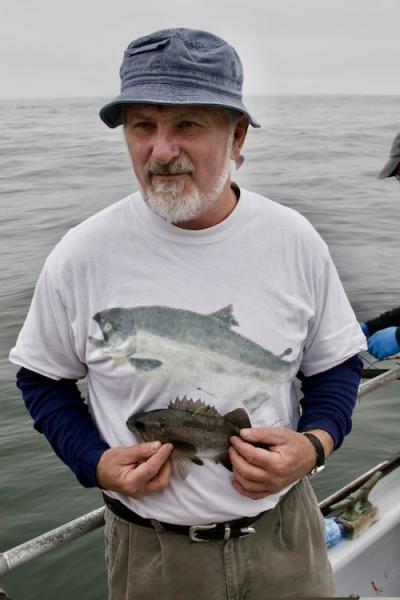In the early 1970s, California’s population exceeded 20 million — triple what it had been at the outbreak of World War II. Then, as now, a majority of Californians lived along the coast, which created an urgent need to find ways in which those who depend on or enjoy the coast could coexist.
California Sea Grant’s extension program was designed to link beach and ocean users to the academics who study California’s coastal and marine issues, says Christopher Dewees, who pioneered the program. This interview is part of a special series celebrating California Sea Grant's 50th anniversary.
Dr. Dewees, in 1972 you became California Sea Grant’s first full-time extension specialist. What did that mean?
The goals of the extension program are two-fold. We identify research needs and link up researchers with local problems so that the research is based on true needs. But extension academics also deliver programs to local communities. To me that's key. As an extension professional you might be able to solve local issues that don't necessarily have a research component. Or you provide information that can help people locally to make wise decisions. One could also conduct collaborative research that leads to problem solving solutions
But first I had to find out who the key people were. Building trust and a perception of non-advocacy was essential to work with the broad range of coastal audiences. We did a lot of marine education and workshops — for example, developing a marine education program for youth through the University of California’s 4-H program, working with home economists and industry to increase awareness of underutilized seafoods and informing the commercial and recreational fishing groups about new technologies and opportunities. It helped that we had some early accomplishments.
For example?
Some of the abalone fishermen had started to look for alternative fisheries, and we helped to build links between Japan and California for a sea urchin fishery. In less than ten years, it became California's most valuable fishery. We also did a project on energy efficiency. It involved modifications to the hull of the boat, and changing to more energy-efficient gear such as nets that created less water resistance when you pulled them across the bottom of the ocean. This meant you burned less fuel while catching the same amount of fish. All of this was tied to low-cost loans. We demonstrated, in collaboration with the Naval Architecture Department at the University of California, Berkeley, that by combining different measures, fishermen could save at least 17% in energy.

You joined the program fresh out of the Peace Corps and have said this was a great preparation. How so?
Some of our projects in Chile involved working with local fishery co-ops. I had to learn how to communicate with people from different cultures. Mostly that meant listening. People had to feel that you heard what they were saying. The same is true for an extension professional. You can't just show up and say, “I'm from the university and I'm going to help you.” They'll say, “Who the hell are you to tell me what to do?” You have to be a good listener, be empathetic and helpful.
The 1970s and early 1980s were a time of transition in marine fisheries. It became less important to increase fishery production and more important to manage and conserve fisheries.
Technology had changed a lot. The electronics became very, very good and the pressure on the resources was getting higher and higher. The federal Magnuson–Stevens Fishery Conservation and Management Act slowed things down and expedited the transition from offshore foreign fisheries to domestic fisheries, which probably saved a lot of long-term grief. By the late 1990s, we had the California Marine Life Management Act, which revamped the state marine fishery system. I was involved quite a bit in that. We also designed and peer-reviewed the first state fishery management plans for white sea bass, squid, and other species for the California Department of Fish and Game.
That meant you often had to navigate between diverging interests.
One thing we preached from the beginning was non-advocacy. As soon as you advocate for a strong position — or are perceived to be advocating — everybody who opposes that position no longer thinks you are credible. Our non-advocacy made us much more effective. We were trusted by the agencies as well as the industry and the public. For example, we managed to get the agricultural water interests together with the commercial and recreational fishermen groups in the northern Central Valley. The farmers finally realized that commercial fishermen were food producers just like themselves. Once that happened, they started to listen to when and where water was needed. It led to a lot of accomplishments which probably slowed the rate of decline of the spring-run Chinook salmon.
What made you pick a career in fisheries?
I grew up in San Francisco and Sausalito and was always around the water, sailing and fishing with friends. In high school, my summer job was as a deckhand on a commercial salmon fishing boat. So I was an ocean person. As a senior in college, I started thinking about what to do next. I really only liked fish. So I got a Master in Fisheries and went from there.
__________________________________________
Christopher Dewees served as the Statewide Marine Fisheries Cooperative Extension Specialist in the Department of Wildlife, Fish and Conservation on the University of California, Davis campus until his retirement in 2007. During the 1990s, Dewees also served as the Program Leader for the Sea Grant Extension Program.